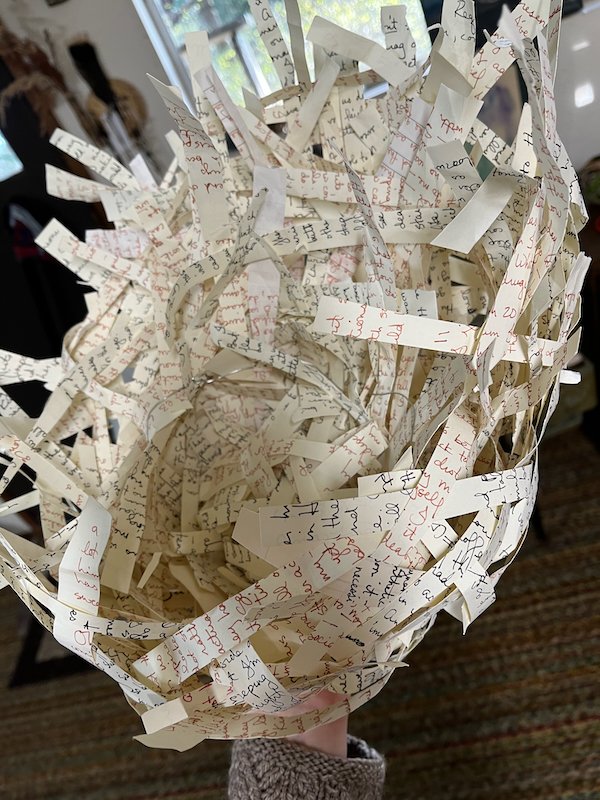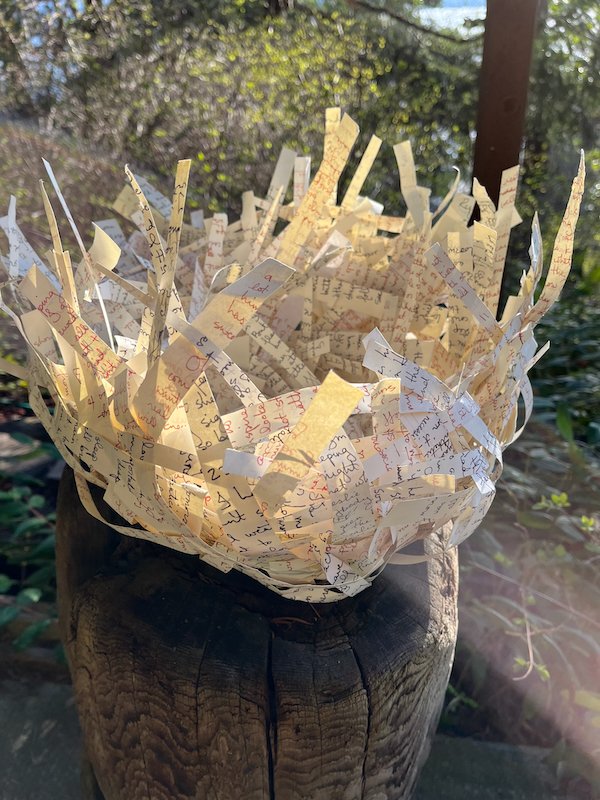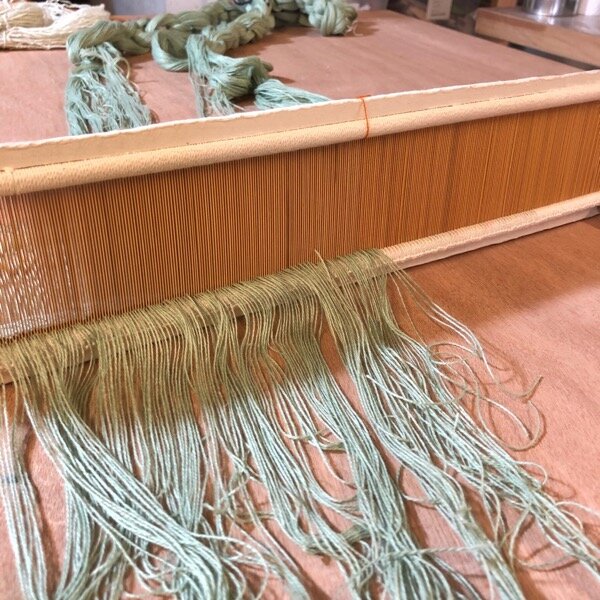I had an image, of a nest made of my own writing. The nest I envisioned was lofty and soft, made from tissue-like paper - because it was a place to fall into, falling back with trust… just an image, a nebulous idea.
But then I also had an old journal, ready to shred. I’ve kept journals since I was 10 years old, and they’ve been progressively thrown out as I go back and realize there’s nothing more for me there. This journal was from the end of my college days. Important times, but apart from a few excerpts that I saved, not compelling reading or archive-worthy at this point. I wondered if I could cut it into strips, and weave the strips (using the term very loosely) into some sort of nest shape.
Strips are too wide, and much stiffer than in my imaginary nest.
That picture is from when I basically failed to keep it together, joining paper to paper with no glue or anything - I teased it all into the spiraling nest shape for a photo, but it was not an actual structure on its own. I found some flexible wire, and made an armature in a cross-hatched basket shape, to give the paper something to hold onto. Learning the properties of this paper, how this specific width and weight of material behaves, was the bulk of the exercise.
And then I spent more and more hours working strips into the nest. It was never really going very well, but each piece secured was gratifying, and the process gripped me such that I didn’t want to stop.
Yes there’s a quilt on the wall. Suddenly that happened again, too.
One side of the shape was relatively stable, the other side flaring out and constantly on the verge of falling apart. Somehow this always-almost-failing was part of the appeal to keep going. Each time that section had to be pulled apart and rebuilt, I just started over without any frustration - it was the nature of it, barely balanced, ineptly interlaced, as if I were coaxing a cloud into a shape, knowing it would shift a moment later.
I’m glad I used different colors of ink back then - made for more interesting nest-making.
Metaphorically, I think this manipulation of sliced up writing from thirty years ago was a way of holding and caring for the scattered bits of myself contained in them, seeing how they can be worked into a new arrangement, as part of the knowledge basket of now. Spending time with them rather than just shredding or burning gave me the chance to integrate what that time gave me and taught me, and to see more clearly what of it I’m letting go.
Calling it done because I used all the strips.
Also, the constant state of cascading failure may just be how things are sometimes… the patience it takes to just keep starting again with the falling apart areas, to recognize where it’s not working and let that part collapse instead of constantly patching and hoping and propping it up fruitlessly. The chaotic, untamed bits have to be seen for what they are, and maybe I don’t have the skill yet to tame them, maybe their refusal and anarchy are teaching me something that I need to listen to.
At any rate, I made this thing, over several days. Now I’ve moved on, but wanted you to see.















